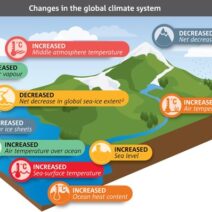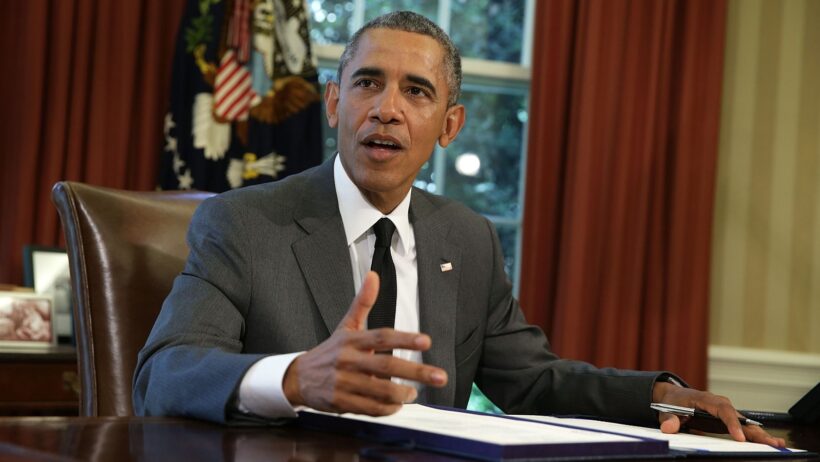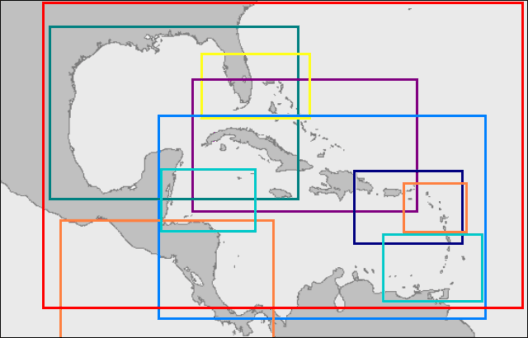In an era when climate change loomed large over global discourse, one figure emerged as a pivotal agent of transformation: Barack Obama. His presidency (2009-2017) marked a significant period of government action on climate issues, including NASA’s policies surrounding global warming. The landscape of space exploration and Earth science can often resemble a delicate balance between scientific integrity and political influence. And within this equatorial zone pivoted a renaissance of public awareness and adaptation to the specter of climate change.
Upon Obama’s ascension to the presidency, the United States was engulfed in an economic recession, yet the impending crisis of climate change loomed larger on the horizon. The scientific community, bolstered by decades of empirical evidence, urged immediate attention. NASA, originally conceived as a space exploration agency, began to realize that its role transcended the boundaries of the cosmos. Suddenly, its mission included acting as Earth’s vigilant steward, tasked with unraveling the complexities of our planet’s climate.
Before delving into the specifics of policy changes, it is essential to appreciate the context in which NASA operated. During the years preceding Obama’s administration, there was a noticeable reluctance to confront the realities of climate change within the federal agencies, including NASA. They were often likened to ships adrift in a tempest, their scientific capabilities undermined by political trepidation. This hesitation stymied the advancement of crucial research and limited proactive measures against impending environmental threats.
Obama’s approach initiated a powerful shift, drawing NASA firmly into the orbit of climate dialogue. He recognized that climate change is not merely an environmental issue; it represents an intricate web of social, economic, and ethical dilemmas. Climate inaction, he argued, held implications for national security and international relations. By reframing the conversation, Obama anchored NASA’s role within this narrative, effectively steering it towards more integrative climate policies.
One of the hallmarks of this policy shift was the introduction of initiatives that elevated climate research within NASA. Obama proposed an increase in funding for Earth science programs, advocating for the agency to enhance its observational capabilities. This funding was not merely a financial allocation; it signified a recognition of the critical importance of understanding our climate system as if it were an intricate clock mechanism, where each gear and cog represented elements that, when misaligned, could contribute to broader systemic failures.
Moreover, the implementation of the Climate Change Adaptation Task Force exemplified Obama’s commitment to prioritizing climate research within NASA’s framework. This task force sought to develop comprehensive strategies that integrated climate science into federal decision-making processes. This collaboration extended beyond the confines of NASA to include diverse governmental entities, fostering a synergy that echoed across multiple disciplines.
Another significant development was the launch of the Earth Sciences Decadal Survey, which shaped NASA’s long-term vision regarding climate observation. The report outlined key priorities and technological advancements necessary for monitoring climate change. Under Obama’s guidance, NASA transitioned from a mere observer of Earth’s systems to an active participant in addressing climate challenges. The agency was encouraged to employ satellites as sentinels, gathering data that would illuminate the shadows of uncertainty surrounding global warming.
While these policy changes were monumental, they were not without their challenges. The political landscape remained fractious; opposition groups persisted in downplaying climate science and advocating for reduced governmental intervention. Despite these obstacles, NASA’s enhanced focus on climate science ushered in an era of unprecedented collaboration with academic institutions, international bodies, and private organizations. Such alliances became crucial in amplifying the voice of science in the public arena.
As Obama championed climate initiatives, he also recognized that communication was vital to foster public understanding. He actively endorsed the idea that scientific knowledge should not be the privilege of only a few but should resonate within society. The creation of platforms to disseminate information became a prime directive, as NASA’s findings began to reach individuals through various media channels. This dissemination can be likened to a tree shedding its leaves in autumn, depositing knowledge and awareness into the soil of public consciousness, where it could take root and grow.
In the final analysis, did Obama change NASA’s policy on global warming? The answer is a resounding yes. His administration catalyzed a multi-faceted transformation that repositioned NASA’s mission and reinforced its role as a pioneer in climate science. Under his leadership, NASA emerged from the shadows of spacecraft and stardust to take center stage in the fight against climate change. The agency’s policies towards climate research were recalibrated, emphasizing the urgent need for rigorous investigation and active intervention.
While the journey towards effective climate action is fraught with challenges, the changes instituted during Obama’s presidency laid an essential foundation for future endeavors. In the face of ongoing environmental crises, it becomes increasingly imperative for organizations such as NASA to remain vigilant and adaptable, ensuring that the complexities of climate change are met with informed responses. Through a commitment to scientific integrity and collaboration, the hope remains that the tide against climate change can be turned, steering humanity towards a sustainable and equitable future.







